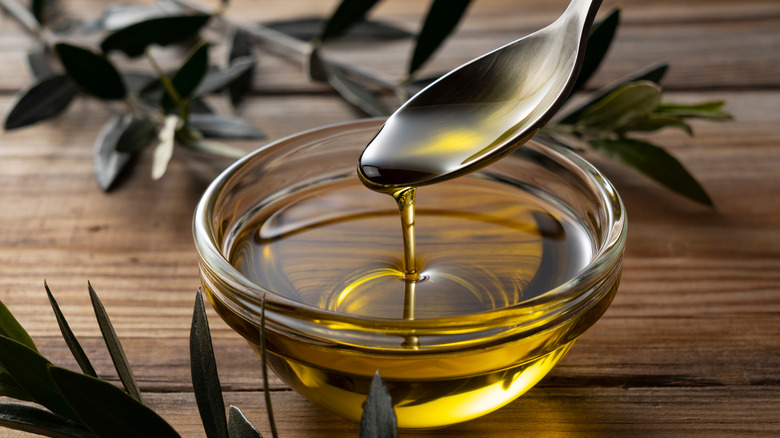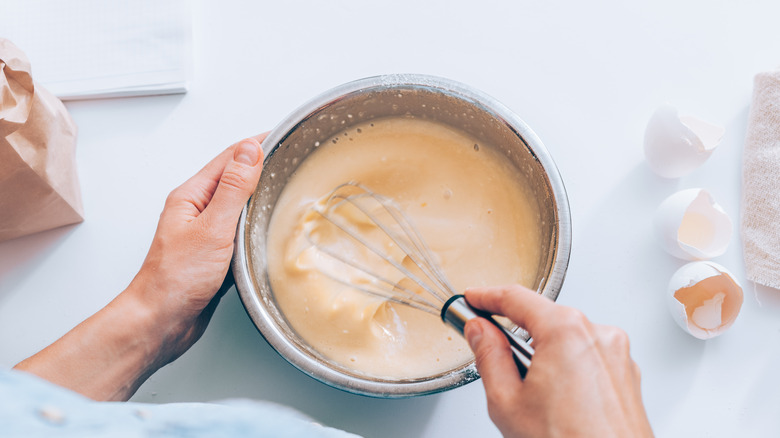What To Consider When Substituting Oil For Butter
Sometimes the unthinkable happens when you're right in the middle of a recipe — you're missing an ingredient. While this might seem less than ideal, it doesn't always mean the demise of your dish. There's almost always a substitution that can work in a pinch, but it might compromise your recipe. When it comes to oil and butter, the two are often thought to be interchangeable fats, but they actually behave in totally different ways in the kitchen. Here's what you need to consider when subbing oil for butter.
Aside from dietary restrictions or lactose intolerance, choosing oil over butter can also be a healthy option. In fact, Well + Good shares that olive oil is particularly rich in monounsaturated fatty acids, which are anti-inflammatory and can support heart health — but, let's not forget that butter can contain fat-soluble vitamins. That said, unlike butter that's actually 80% fat, 18% water, and 2% milk, Nigella.com explains that oil is instead 100% fat. Naturally, this can make some challenges when swapping the ingredients.
Although oil can be replaced for butter without a problem during cooking, the same can't always be said for baking. Only if a recipe calls for melted butter can oil easily sub in, otherwise Martha Stewart explains that it won't work as effectively in place of room temperature butter for tasks that require creaming the ingredient. Likewise, there are also some other factors at play when substituting butter for oil, which include taste, texture, and measurements.
Follow a 3:4 ratio of oil to butter, but beware of taste and textural changes
Butter always has a rich and creamy mouthfeel with a mild hint of sweetness. Oil, on the other hand, can vary vastly in flavor depending on which ingredient it's made from. Neutral vegetable oils won't tamper taste, but, should you want to amp up the flavor then The Washington Post suggests adding nut (walnut oil), seed (pumpkin seed oil), or olive oils. Even an infused oil can work if it compliments the other flavors in a recipe.
Since butter is a saturated (solid) fat unlike oil that's an unsaturated (liquid) fat, the butter will behave differently in a recipe due to its composition. Thanks to a fatty acid called butyric acid that's found in butter, Bob's Red Mill explains that the ingredient can work as a leavening agent and create a moist and fluffy (but sometimes flaky) texture due to its many air bubbles that can't be found in a compact fat like oil — hence why oil can make baked goods denser and greasier if not properly measured.
When it comes to making the substitution, note that measurements are meant to replace solid butter, which has more volume. Following a 3:4 ratio, Brightland recommends that three parts of oil should be substituted in place of every four parts of butter. That means that for every eight tablespoons of butter that a recipe calls for, you only need to use six tablespoons of oil.

